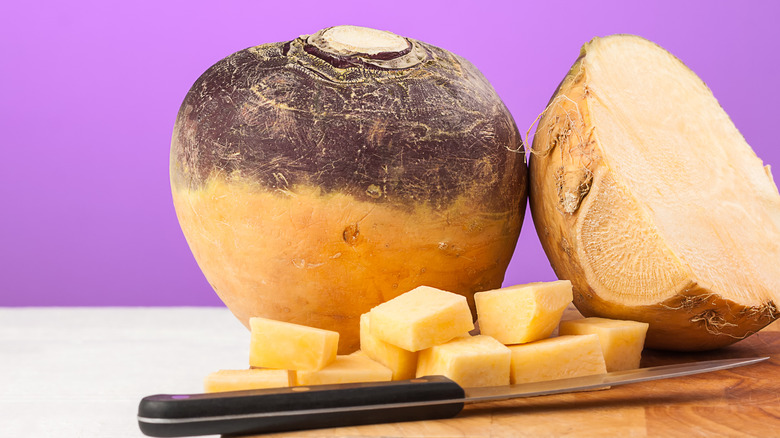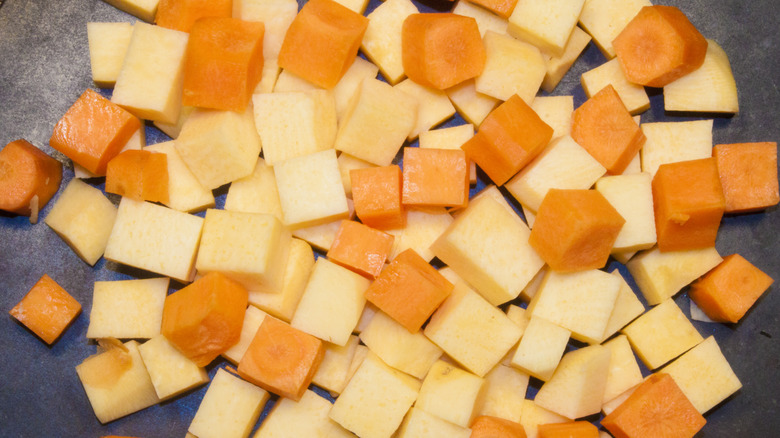The Best Tool For Preparing A Rutabaga Isn't Solely A Knife
Did you know that how you cut food has a dramatic impact on its flavor? For example, many types of produce respond in different ways to being mashed, cut into cubes, or thinly sliced. Cutting or mashing often releases enzymes in fresh ingredients, enhancing their flavor while also changing their mouthfeel. Moreover, cutting produce into smaller pieces allows more of the surface to come into contact with your taste buds, so you perceive the taste as being stronger.
Rutabaga is a prime example of how proper knife work can positively affect the flavor of an ingredient — and vice versa. Most importantly, if you don't remove the tough layer beneath the root vegetable's inedible waxy skin, it can give your dish an unpleasantly bitter taste. To make sure you completely remove this thick layer, it's best to use more than a knife. The secret, according to MasterClass, is to microwave the rutabaga for two to three minutes to soften the flesh, so cutting and peeling are easier.
You need to make a few small holes in the rutabaga with a fork before placing it in the microwave, as you would with a potato. If you don't, the steam created inside the vegetable won't have any place to escape, so it could explode — not an ideal food prep strategy.
How to prep a rutabaga
Once you soften up a rutabaga in the microwave, the formidable vegetable becomes easier to work with. After this step, there are two general approaches. The first is to attack it whole, removing the skin as you would peel a potato. Since the waxy, bitter layer on a rutabaga is much thicker than the skin of a potato, though, this method is laborious, so it may not be your best bet.
Perhaps a better way to remove the skin of a rutabaga is to halve the vegetable vertically. Then, place the flat sides down on your cutting board (for stability), and carefully slice the rutabaga into semi-circles that are about a half-inch thick. Handling each semi-circle piece one at a time, use a paring knife to remove the skin. Pay attention to the tougher, lighter-colored section that separates the tender flesh from the peel, so you remove all the inedible parts when slicing.
The last step is to cut the rutabaga into wedges or small cubes, which will roast to sweet, golden perfection in the oven.

